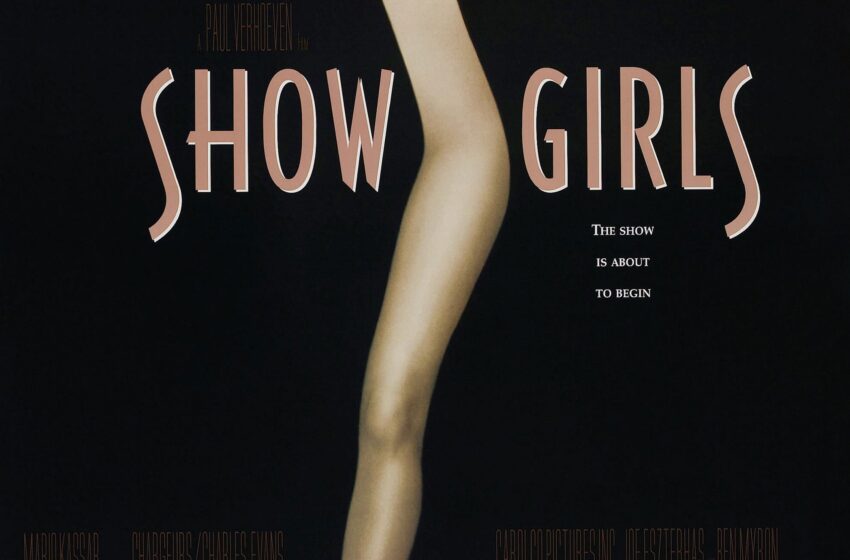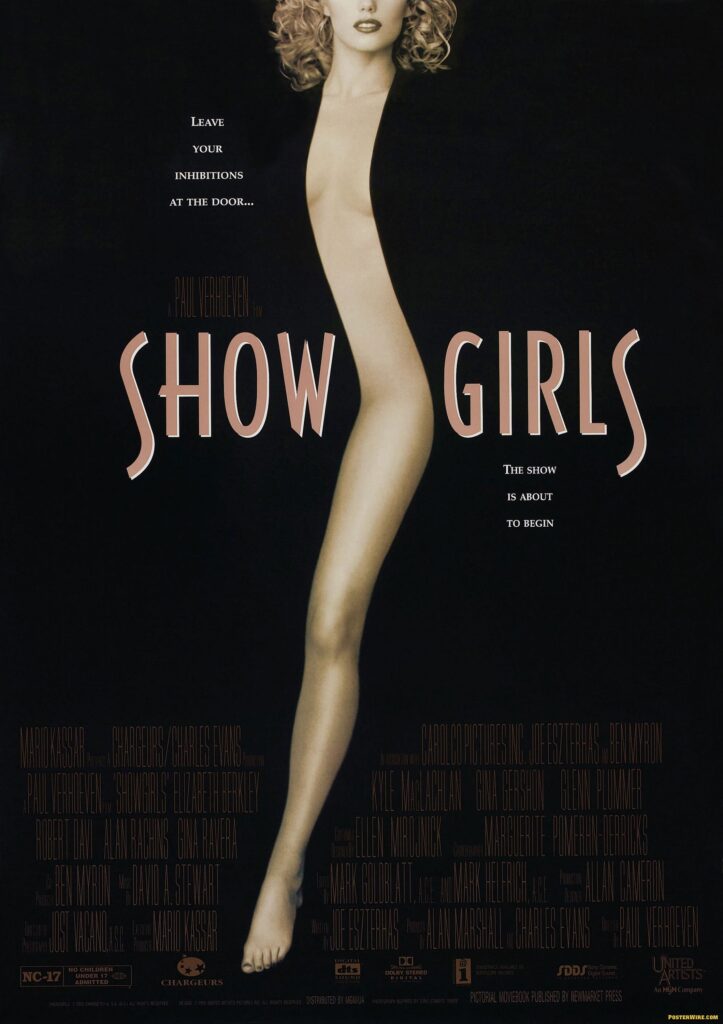
“Showgirls” (1995) – The Misunderstood Satire on Hollywood’s Misogynistic Archetypes

In 1995, Paul Verhoeven’s “Showgirls” premiered to an audience that could only be described as baffled and scandalized. The movie was initially dismissed as trashy, shallow, and embarrassingly bad. It didn’t just become a Razzie legend; it was widely seen as a cautionary tale in cinematic excess and misguided eroticism. However, what most contemporary critics failed to recognize was the film’s satirical undertone, which laid bare the misogynistic clichés and archetypes of Hollywood storytelling.
Nomi’s Journey – A Subversion or Reiteration?
At the center of “Showgirls” is Nomi Malone (Elizabeth Berkley), a young woman with dreams of making it big in Las Vegas. This premise alone lays the foundation for the archetypal Hollywood narrative. As Nomi navigates her way through the seedy, neon-lit world of adult entertainment, the audience is meant to root for her. However, Verhoeven flips the script by presenting her not as a damsel in distress but as a fiercely ambitious, if deeply flawed, individual. This takes the typical “girl in the big city” narrative and twists it into something far more uncomfortable, serving as an indictment of the simplistic ways women are portrayed in Hollywood.
The Lap Dance Sequence – A Mirror to Audience’s Voyeurism
One of the most controversial scenes in the movie is the lap dance sequence. At first glance, it appears gratuitous and exploitative. But viewed through a satirical lens, it’s a commentary on how Hollywood commodifies sexuality. Nomi uses her sexual prowess as a bargaining chip, not because she wants to, but because the system has conditioned her to believe that her worth is tied to her sexuality. The scene serves to make viewers uncomfortable about their voyeuristic gaze, pushing us to question our role as consumers of such exploitative narratives.
Satirical Character Arcs
The character of Cristal Connors (Gina Gershon), a seasoned showgirl, becomes the yin to Nomi’s yang. On the surface, Cristal is the embodiment of success, a testament to the notion that ambition and sensuality are all one needs to climb the ladder. However, the film slowly unravels her as a victim of the same toxic environment that initially seems to empower her. This duality is a blatant critique of Hollywood’s Madonna-whore complex and the reductionist roles available to women within the industry.
The Volcano Scene – A Pinnacle of Parody
The “Goddess” show, highlighted by the infamous volcano scene, functions as a microcosm of the entertainment industry’s absurdity. It’s over-the-top, flashy, and entirely disconnected from any form of reality. The women are not people; they are part of the set, objects in a male fantasy. Here, Verhoeven is almost screaming at us, showcasing the absurd lengths to which Hollywood goes to sexualize and commodify women’s bodies while making it appear glamorous.
The Rape Scene – Time to Face the Music
While the film offers a scathing critique of Hollywood’s objectification of women, it’s unwavering with the inclusion of a rape scene involving Nomi’s friend, Molly. This part of the movie seems at odds with the film’s purported satirical approach, but in the end it’s letting you know how common this kind of despicable behavior is while also posing the question: Can a film critique exploitation while being real? The answer is, “Yes.”
Legacy
“Showgirls” is a complex beast, a film that was perhaps too audacious for its time. The movie uses satire as a weapon to dissect Hollywood’s dehumanizing tropes about female ambition and sexuality. However, it does so within a framework that often uncomfortably mirrors the very elements it seeks to critique. The result is a film that exists in the anti-goldilocks zone – it’s a Jupiter. Beautiful but absolutely toxic – a feature that adds to its depth but delays its legacy.
If “Showgirls” accomplishes anything, it’s this: it holds up a mirror to its audience and asks us to confront our complicity in consuming misogynistic narratives that Hollywood has been peddling for decades. And for that reason alone, it deserves to be revisited, not as a “so-bad-it’s-good” cult classic, but as a deeply flawed yet audacious attempt at social commentary.




